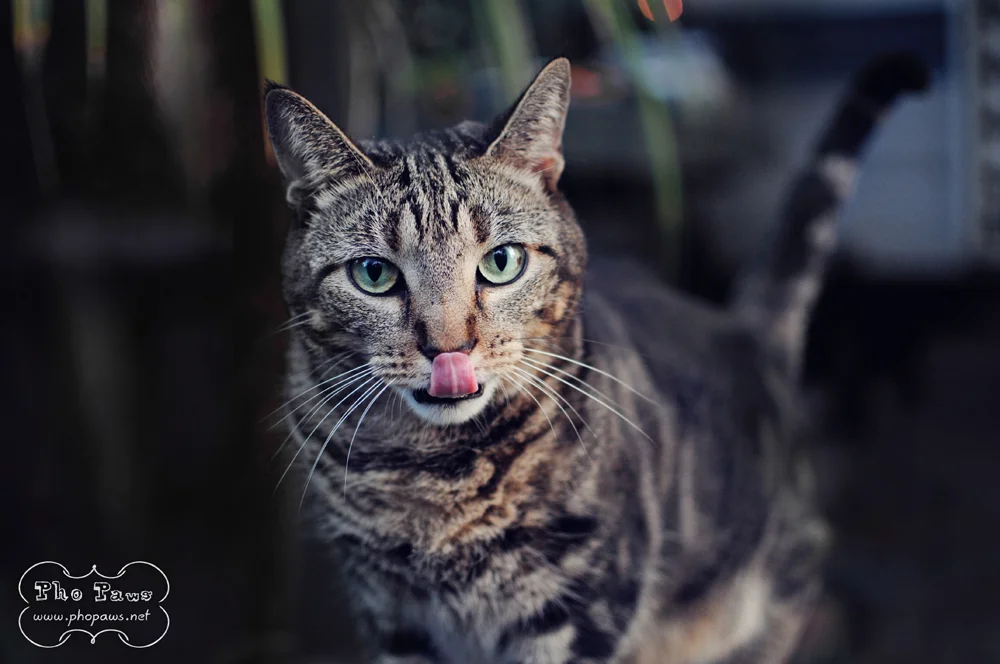Tiger is a beautiful outside domestic cat that I had the joy of shooting briefly during a dog agility shoot. This photo was taken at the last light of day and there is no artificial light.
Photographing in low light situations can be sticky, so I want to share a few things that I do. My camera exposure decisions are based on preference rather than necessity most times, so depending on which photographer you ask, the answer will vary.
Personally, I like to avoid grain as much as possible, unless it lends itself over artistically to the shot I want. So the last exposure decision I make is to crank up the ISO. I most prefer to shoot with fast lenses, f/1.8 or less, so the first thing I change in low light is my aperture.
It's worth practicing holding your camera very still in the event that you want or need to shoot with a slow stutter speed. This shot was taken with a slower shutter speed and a wide open aperture, so I held my camera very still in order to make it sharp.
If you are shooting in low light and using natural light only, I recommend lighting your subject well and letting the background light fade whenever possible. This draws the attention to the subject while still providing details that create context in the background.
As the evening light changes, so do the color values, and therefore exposing correctly is key. If you underexpose, you risk losing details in the darkness. If you overexpose, you risk not being able to color correct well. In post production, I chose to lean a little to the blues and magentas for this shot because I felt that it hinted at that prime "just after sunset" light.
Experiment with lighting and exposing your images in low light using natural light only and share what you've discovered! Send me a contact form with your findings, I'd love to hear what works for you.

